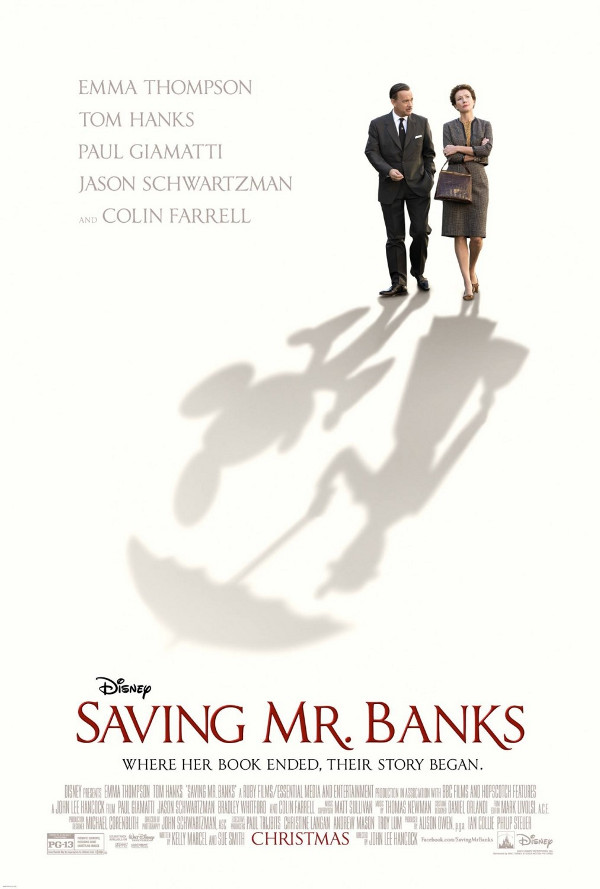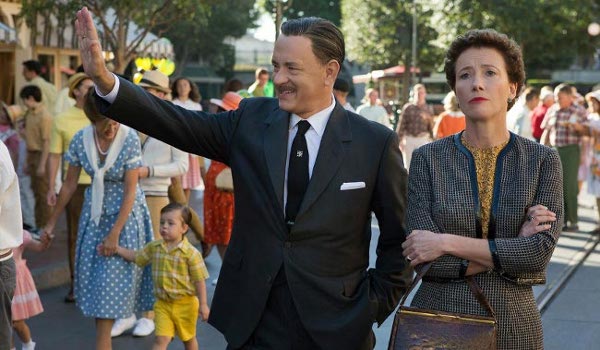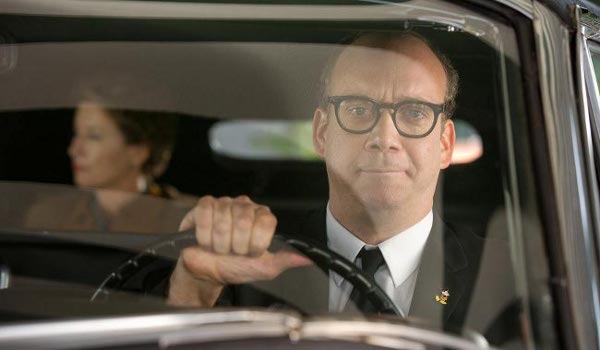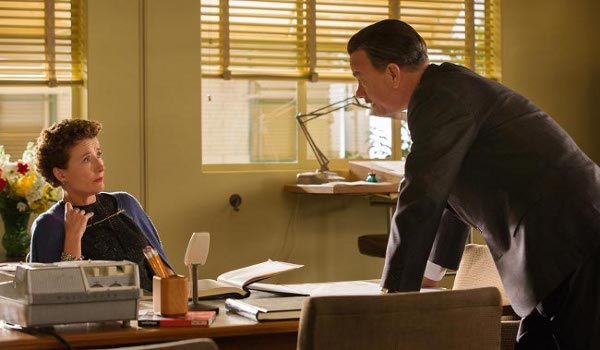- Title: Saving Mr. Banks
- IMDB: link

 Written by Kelly Marcel and Sue Smith, and based off pieces of the life of P.L. Travers (Emma Thompson), Saving Mr. Banks is half of a really good film. The story is broken into flashbacks of Travers’ childhood and decades later when Walt Disney (Tom Hanks) was attempting to buy the rights from the author’s children’s books to make Mary Poppins.
Written by Kelly Marcel and Sue Smith, and based off pieces of the life of P.L. Travers (Emma Thompson), Saving Mr. Banks is half of a really good film. The story is broken into flashbacks of Travers’ childhood and decades later when Walt Disney (Tom Hanks) was attempting to buy the rights from the author’s children’s books to make Mary Poppins.
Although there is much to enjoy in the later Disney years (despite the oversimplification of Travers’ stubbornness) the film gets bogged down in the weight of the constant flashbacks which may offer a peek at the real story that first created Mary Poppins on the page but ignores much of the life story of the woman who wrote her.
The scenes involving the young Travers’ (Annie Rose Buckley) drunken but imaginative father (Colin Farrell), troubled mother (Ruth Wilson), and larger-than-life aunt (Rachel Griffiths) fall in the realm of Dinsey-ized melancholy, but the scenes in California between the equally stubborn Disney and Travers provide its magic.
Not only are Hanks and Thompson fun on-screen together, but I will give credit for the film’s producers in rounding out the cast of Walt Disney Studios with Bradley Whitford as screenwriter DonDaGradi and Jason Schwartzman and B.J. Novak as composers Richard M. Sherman and Robert B. Sherman. I even enjoyed Paul Giamatti in the role of Travers’ over-talkative driver. It’s in these performances and their interactions with one another which provide the Disney-esque moments where director John Lee Hancock gets the best from his cast (and make you want to rush out re-watch Mary Poppins again as soon as possible).
The film’s failure to tonally hold together is certainly an issue, but the later “present day” sequences set in the mid-1960’s are good enough to make Saving Mr. Banks an easy recommendation, particularly for those who want some background into the history of the making of the film. However, given that nearly half of the movie is spent on P.L. Travers’ own history we learn very little about the actual history of the difficult woman who fought Walt Disney tooth and nail over every aspect of her character’s adaptation to the big screen.

The script doesn’t touch on any piece of Travers’ life from when she was a small child to the far older version we see later generally ruining the lives of every member of the the Disney Studios’ staff. Not mentioned are the woman’s travels as a poet, writer, and actress, working for the British Ministry of Information during WWII, her love of mythology and fokelore that led her to spend summers living with Native American tribes, and even spending time in Japan studying Zen. Nor does the film touch on her bisexual love affairs or her role as a mother for an adopted child of friends.
As a peek into the troubles and tribulations of struggling to adapt a difficult author’s work into a feature film Saving Mr. Banks is a success. It also works well as a sweet and schmaltzy holiday tale, simplified with its rougher edges sanded-down to make it suitable for the entire family. As anything more than a cursory glance at the tiniest slice of Travers’ life, however, the film is found severely wanting. I hope that those who enjoy the film will take the time to learn far more about the author’s life than Disney was willing to divulge here.





